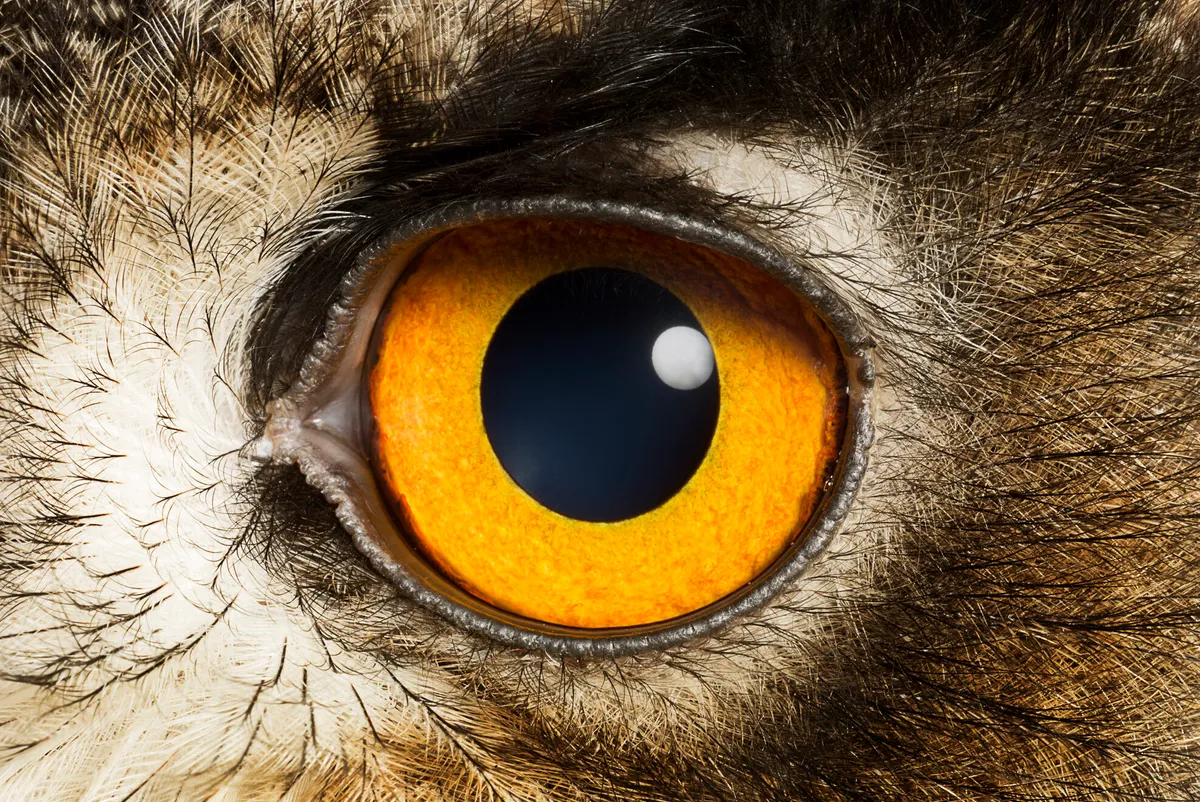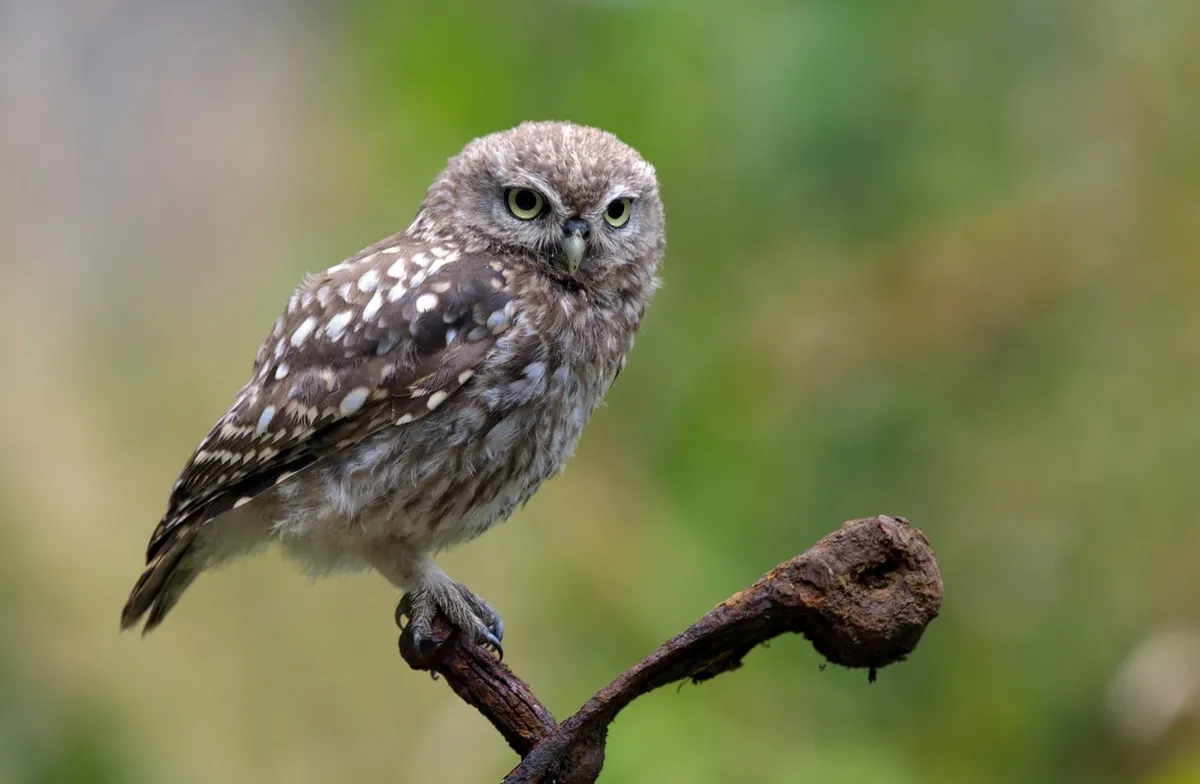In the depths of winter the pattern of our daily lives increases in its overlap with the countryside’s nocturnal inhabitants. It is during dark evenings that the still air may echo with the calls of one such inhabitant, a male tawny owl, his hooting call far-carrying and otherworldly.
Such calls are used to advertise the ownership of a particular piece of woodland, alerting other individuals to the owl’s presence and highlighting the start of the breeding season for these early nesting birds.
There are other owl species too – barn, little, long-eared and short-eared owl – all of which breed regularly in Britain and Ireland. Learn more about these nocturnal predators with our guide to the UK's most common owl species, including where to see them and how to identify them.

How many owl species are there in the UK?
Five species of owl breed regularly in Britain and Ireland, four of which (barn, tawny, long-eared and short-eared owl) are native and one of which (little owl) was introduced during the late 1800s. The snowy owl is a rare visitor from further north that has bred here on occasion and the small numbers of eagle owls breeding here are thought to derive from aviary escapes and deliberate releases.
What do owls eat?
Though owls tend to have quite varied diets, it's the presence of small mammals such mice, voles and shrews that make up a large portion of their meals, regardless of the species.
How owls have adapted to night
Being active at night brings its own challenges and Britain’s owls share a number of adaptations that aid them in their nocturnal way of life. The large, forward-facing eyes, which are so vast that the owl skull is highly modified to accommodate them, give owls their characteristic flat-faced, round-headed appearance. These features make owls instantly recognisable and, for the most part, popular with human observers.
The sizeable eyes suggest a high degree of visual sensitivity, enabling the owl to make the most of what little light is available at night. Curiously, while the visual sensitivity of owls is well beyond that of most diurnal birds, it is not that much better than our own. In fact, there will be readers among you whose visual acuity is better than that of some tawny owls.

One of the reasons why the tawny owl is thought to be so sedentary in its habits, and a perch-based hunter, is because hunting on the wing within closed-canopy woodland would be too hazardous at night. Such hazards are emphasised by records of tawny owls seen colliding with branches and tree trunks when accidentally flushed from their nocturnal perch. While the owl eye plays an important role at night, the bird also has to rely on its sensitive hearing to locate and catch prey.
History and folklore of owls in the UK
The nocturnal habit shared by most owls is the thing that sets them apart. Active at a time when our sense of sight is restricted, the owls share the night with our fears and it is all too easy to see why they have been associated with witchcraft and evil deeds.
An association with the world of spirits can be traced back many thousands of years, to the hunter-gatherer communities that inhabited western Europe during the Upper Palaeolithic (some 12,000 years before present). Owls appear to have held an important cultural significance for these communities and were, it seems, linked with shamanic ritual. This is a role still evident within some of the modern hunter-gatherer communities living within parts of Africa.

A fear of owls is certainly evident within some classical texts, in which the birds are seen as a sign of ill omen and linked, for example, to the witches of Roman myth. William Shakespeare, who borrowed heavily from classical texts, used owls to good effect, introducing them into his plays when a sense of foreboding was needed. In Macbeth, for example, Shakespeare sets up the brutal murder of Duncan with “Hark! Peace! It was the owl that shriek’d, the fatal bellman, which gives the stern’st good-night. He is about it.” Shakespeare was also playing to the fears of his audience, many of whom would have regarded owls with suspicion, being familiar with village tales of a death foretold by a calling owl.
Changing perceptions of owls
It is not until the literature of the 1700s that texts begin to lose the superstition and give a more appreciative impression of our owls. Wordsworth, in particular, was vocal in challenging the superstitions surrounding owls, something also seen in the writings of the naturalist Gilbert White. White once had to calm a village up in arms over the hissing calls of young barn owls, heard coming from the local church tower and mistakenly thought to be the voices of “goblins and spectres”.

Not all cultures viewed owls so negatively. In ancient Greece, the Athenians associated the little owl with Athena, a goddess linked to wisdom, art, guardianship and war. The goddess is frequently depicted alongside a little owl, including on Athenian coinage, and the sight of a little owl was thought to be lucky, indicative of Athena’s patronage. There is even the story of an Athenian general who sought to lift the morale of his troops by releasing captive owls among them. These settled on the helmets and shields of his men, spurring them on to rout their Carthaginian enemies.
Even within a culture there may be differences as to how owls are viewed. For example, while some Native American tribes were fearful of owls, others viewed them as spiritual guides or even their ancestors reincarnated. Within Britain, the dichotomy between positive and negative associations can be seen in folklore as diverse as owls foretelling a pregnancy (Wales) or causing a cow to produce bloody milk (Shetland). Other folklore links them with unusual weather.

Whatever the beliefs of our ancestors, we now tend to view owls with affection. Thanks to the Harry Potter books, even the associations with magic are no longer to be feared. Our knowledge and understanding of owls has improved, with nature documentaries and shows such as BBC Autumnwatch making these nocturnal creatures more accessible.
So, while the screech of a male barn owl may still be blood-curdling – and believe me it is, when heard unexpectedly in the dead of night – we now know that the creature making such a call is nothing otherworldly; it is not a spirit or a curse. If anything, the territorial calls of a tawny owl have become reassuring, a sign that all is right with the world.
Which species of owl live in the UK?
Barn Owl

Found across most of Britain and Ireland in grassland and farmland, but absent from upland areas. Sedentary in habits, it feeds mainly on voles but also takes mice and shrews. It has a wider hunting range and is more diurnal than the larger tawny owl and may be seen late afternoon, at dawn or dusk. Numbers have declined over the past century. Population: around 6,000 pairs.
Short-eared owl

Often active during the day, the short-eared owl is restricted as a breeding species to upland moorland and, occasionally, coastal grazing marsh. This latter habitat is often used in winter, when it may hunt alongside barn owls. Rather nomadic in its movement, the bird moves between Britain and overseas in response to vole numbers. Population: around 1,400 pairs.
Tawny owl

The most widespread British owl. Absent from Ireland, it favours wooded habitats, including some of our better-wooded suburbs. This sedentary and territorial species uses the knowledge of its woodland territory to hunt small mammals from favoured perches. Population: 50,000 pairs.
Long-eared owl

Due to its secretive habits, this is the owl about which we know the least. It’s associated with conifer plantations and hawthorn scrub, using both for nesting, and is more common in the north than in the south or east. Numbers increase in winter, when long-eared owls from Scandinavia arrive on our east coast. Population: could be as high as 4,000 pairs.
Little owl

Introduced in the late 1800s to several country estates, this smallest of our owls feeds on small mammals, small birds and larger invertebrates. It’s regularly seen during daytime and often sits out on a favoured perch close to the nest site. Numbers are falling over recent years, a pattern also being seen elsewhere in Europe. Population: around 5,700 pairs.
